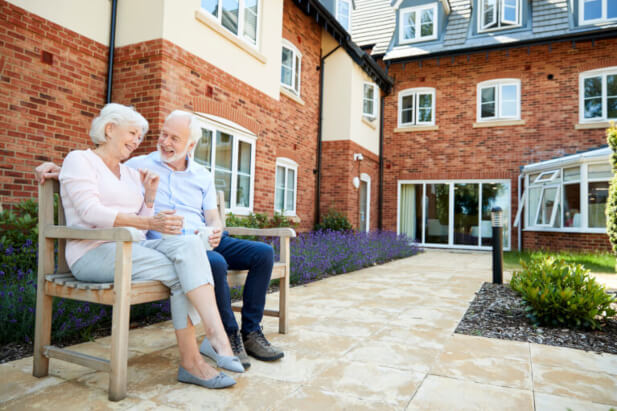The Growing Need for Affordable Senior Living
With longer life expectancies and an aging population, more seniors are seeking housing that supports their desire for independence while providing safety and community. Affordable senior living options—ranging from compact apartments to cozy cottages—cater to those aged 55 and older, enabling them to downsize without sacrificing comfort or autonomy.
These residences often come equipped with thoughtful features like emergency call systems, accessible bathrooms, and non-slip flooring to enhance safety. Communal spaces, such as gardens, libraries, or activity rooms, foster social connections, creating environments where seniors can thrive. Whether you’re an active retiree or someone seeking a bit more support, there’s a solution designed to fit your lifestyle and budget.
Understanding Senior Housing Options
Choosing the right senior living arrangement starts with understanding the variety of accommodations available. Retirement villages offer a welcoming, secure environment with options like studio apartments, one-bedroom flats, or standalone bungalows. These homes are often unfurnished, allowing residents to personalize their space.
Many retirement communities include shared amenities like dining halls, fitness centers, or craft rooms, encouraging residents to stay engaged and build friendships. Located near essential services—such as medical clinics, grocery stores, or public transit—these villages make it easy to maintain an active, connected lifestyle. Some even offer on-site services like hair salons or guest suites for visiting family, adding convenience and comfort.
Independent and Assisted Living: Tailored to Your Needs
Independent living communities are perfect for seniors who want to maintain their freedom while enjoying a supportive environment. Facilities like Harmony Living Communities or Sunrise Senior Living prioritize physical and mental wellbeing through activities like yoga classes, book clubs, and community outings. These programs not only keep residents active but also foster a strong sense of belonging.
For those who need occasional assistance, assisted living communities provide personalized support, such as help with medication, dressing, or mobility, while preserving as much independence as possible. On-site staff are available 24/7 for added security, and many communities offer optional dining services with nutritious, chef-prepared meals. These features ensure residents feel cared for without feeling restricted, making assisted living a flexible option for evolving needs.
Sheltered Housing and Enhanced Care: Balancing Independence and Support
Sheltered housing, also known as supported housing, is ideal for seniors who want to live independently but value the peace of mind that comes with nearby support. These residences typically offer private apartments or bungalows with access to communal areas like lounges, gardens, or activity centers. Emergency response systems, such as pull cords or wearable devices, ensure help is always within reach.
For those requiring more comprehensive care, extra care housing—often referred to as enhanced assisted living—provides a higher level of support. Residents benefit from personalized services, such as assistance with daily tasks, housekeeping, or medical care, tailored to their specific needs. These facilities are designed to adapt as needs change, offering a long-term solution that prioritizes comfort and dignity. Many extra care communities also include wellness programs, such as physical therapy or memory care, to support overall health.
Accessing Affordable Senior Living: Practical Steps
Finding the right senior living option starts with research and planning. Begin by contacting your local council or housing authority to explore available programs and eligibility requirements. Many affordable housing options, such as sheltered or extra care facilities, require applicants to be over 55 or 60 and may prioritize those with specific health or financial needs.
Choice-based letting systems allow seniors to browse and apply for properties that match their preferences, often through online portals or housing association exchanges. Additionally, nonprofit organizations and government programs, such as HUD’s Section 202 Supportive Housing for the Elderly, offer resources and subsidies to make senior living more affordable.
For veterans, programs like the VA’s Community Residential Care or Aid and Attendance benefits can provide financial assistance for housing and care. Don’t overlook community-based organizations, which may offer free consultations or application support to guide you through the process.
Pro Tip: Start the application process early, as some programs have waitlists. Gather necessary documents, such as proof of age, income, or medical needs, to streamline your application. Exploring multiple options—such as rentals, leaseholds, or shared ownership—can uncover unexpected opportunities.
Financing and Support: Making Senior Living Affordable
Affordability is a key concern for many seniors, but several strategies can help. Housing subsidies from government programs can reduce monthly costs, while low-income housing tax credits may be available for qualifying residences. Some communities offer sliding-scale fees based on income, making high-quality care accessible to more people.
Additionally, long-term care insurance or Medicaid (in certain states) may cover costs for assisted living or extra care housing. For those ineligible for subsidies, many facilities partner with lenders to offer flexible payment plans, allowing residents to spread costs over time. Always inquire about financial assistance options when researching communities.
Why Act Now?
Exploring affordable senior living options empowers older adults and their families to make informed, confident decisions. Whether you’re seeking the social vibrancy of a retirement village, the balanced support of sheltered housing, or the comprehensive care of an assisted living community, the right choice can significantly enhance quality of life.
By starting your search early, you can take advantage of a wider range of options, avoid rushed decisions, and plan for a smooth transition. The perfect senior living solution not only provides a safe, comfortable home but also fosters independence, community, and peace of mind for years to come.
Your Next Step: Ask yourself, “What kind of lifestyle do I want in my next chapter?” Then, take action—contact your local housing authority, explore nonprofit resources, or schedule a tour of a nearby community. Your vibrant, supported future starts today.

